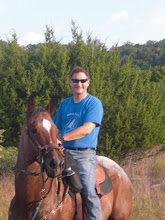
Just like in melee combat, you roll 1d6 for each attacking unit. If the die result is equal to above the numbered required on the table, a figure casualty has been inflicted on one’s opponent (remove miniature from play).
……………….….DEFENDING…UNIT……
Attk…… A.….B.….C.….D.….E.….F
Frbll.…....4.…...4…...3…...3…....2…..2
Mskt….....5.… ..4…..4.......3…....3…..2
Lngbw......5… ..5…...4......4…...3……3
XBow......6….. 5…...5….....4…....4……3
Bow....... .6….. 6…...5….....5…....4…...4
Sling..……7….. .6…...6…...5…....5…...4
Unlike melee combat, defenders get a saving throw if successfully hit in range combat if and only if they have adequate cover or concealment. Roll d6 for each unit struck (higher is better),
rerolling ones if target is small size
(such as elves, goblins, halflings, etc.):
6+ if wooden shield, brush and/or fog,
5+ if kite shield, low fence and/ or trees,
4+ if tower shield, battlements and/or trenches,
3+ if murder hole, hidden and/or invisibility.
Range is expressed in map squares, not in inches. Each map square or hex represents ten feet of simulated distance. Each unit (5 soldiers) or monster figure controls a single square. Two figures cannot occupy the same square. If figures are touching they are locked in melee; otherwise, missile combat is allowed. Subtract one from d6 roll if long range (twice that listed).
Bow (TL II, Range is 10” ): this weapon is a flexible piece of wood, bent by a string or cord between its ends. The bow is designed for propelling long finned darts known as arrows. Unlike firearms, which kill by shock, bows kill by causing internal bleeding. The bow is 30-40” in length; twelve arrows are usually carried on a quiver on the owner’s side or back. Bows are used by mounted archers (TL III) and many ground units; elves, orcs, goblins, skeletons, etc..
Crossbow (TL IV, Range is 15” ): combining mechanical leverage with archery, the crossbow has more accuracy and lethality than a bow. The owner of this weapon will carry 20 bolts (or quarrels) in a quiver at his side. This is the preferred range weapon of dwarves. Although a crossbow has a slower rate of fire than a bow, it requires less training to develop proficiency.
Fireball Range is 20” this simulates the 3rd level magic-user spell. The fireball spell effects a number of units = spell caster’s level divided by two.
Longbow (TL IV, Range is 12”): an advanced infantry design, this bow is as tall as an ordinary man. The longbow requires years of training to use skillfully (‘on mark’), but is capable of killing at significant range. The longbow’s body is shaped from a single piece of rare and highly-prized yew wood. The bow string is woven from flax or hemp. Only gnolls and veteran human archers usually deploy long bows.
Musket (TL V, Range is 9” ): a version of this sturdy 18th century infantry weapon had a service life of over 150 years with the British military. The musket uses a flint striker which ignites the main charge (black powder); thereby propelling a .50 caliber lead ball down a 20” barrel. A skilled musketeer is capable of firing three shots per minute. Although dependable and lethal, these firearms are not very accurate. Muskets and matchlocks were adapted by renaissance armies over longbows, because muskets more readily penetrate plate armor and longbows require an extensive amount of training to become proficient. Musket is also used to simulate spells that attack a single target such as flame strike, blight or lightning bolt.
“Don’t fire until you see the whites of their eyes.”
William Prescott, June 1775
Sling (TL I, Range is 8” ): a piece of leather that has been shaped to engage centrifugal force to hurl a rock a stone. Rerolls ones if used by halflings. Treat web as a sling that holds enemies in place; it effects number of units= half spell caster’s level. Sling is also used to simulate magic missile.
miniature is bronze age miniatures
>unit casualties includes MORALE
(lawful troops are LESS likely to break)
these rules inspired by wardammer and Maldecon


























No comments:
Post a Comment